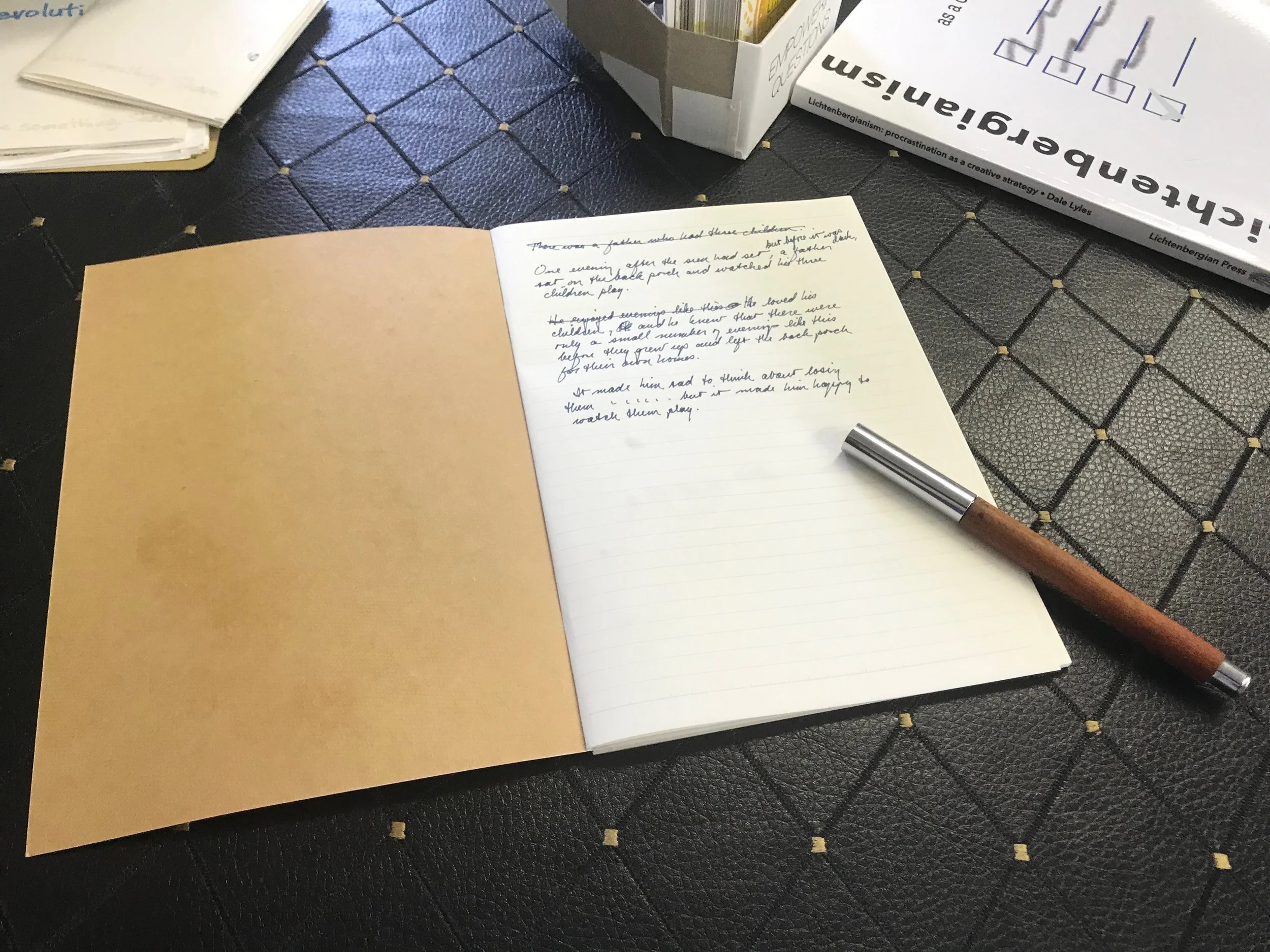A small example of SUCCESSIVE APPROXIMATION
/Yesterday at Backstreet Arts I began an ABORTIVE ATTEMPT on my as-yet-untitled children’s book, and I have a few strategems to share with you.
Without giving too much away about the plot—all in good time, my pets—there comes a point in the story when the father of three children describes to them some of the wonders of the natural world in the back yard.
My intention is to make these pages wide-ranging, poetic, and full of delight. (I will probably use Marion T. Smith’s The Wilderness in My Backyard as a reference, Ted being a member of the Lichtenbergian Society and all.) So these pages are not something that I can just “start at the beginning and write until I reach the end.”
I did what any self-respecting Lichtenbergian would do: I created three blank pages with the topics written at the top. Now I can work on all three topics at random, adding beautiful observations as I think of them and ordering them into the final text later. TASK AVOIDANCE at its best.
However, here’s what I really wanted to show you:
In the book, each of the three children describes what he/she sees. The two older children go into some detail, but I wanted the youngest’s statement to be as simple as it could be, to throw the reader’s mind up into the Milky Way and the dazzling night sky.
Notice what I did. If I had to reconstruct my GESTALT process, it would probably be:
put “I see the stars” last so the reader’s mind is thrown into the sky
not ‘slingshotty’ enough; too many words
take out “the youngest”; rearrange
shorter is better; but lost the slingshot
rearrange
that’s it
Notice that each time I wrote the sentence, it was just another ABORTIVE ATTEMPT that I needed to nudge closer to what I thought it would make it work.
Notice also that a) nothing precludes me from going back and using one of the versions I discarded; and b) nothing precludes me from rewriting the “perfect” version again if the succeeding text makes it necessary.
Go ye and do likewise.




